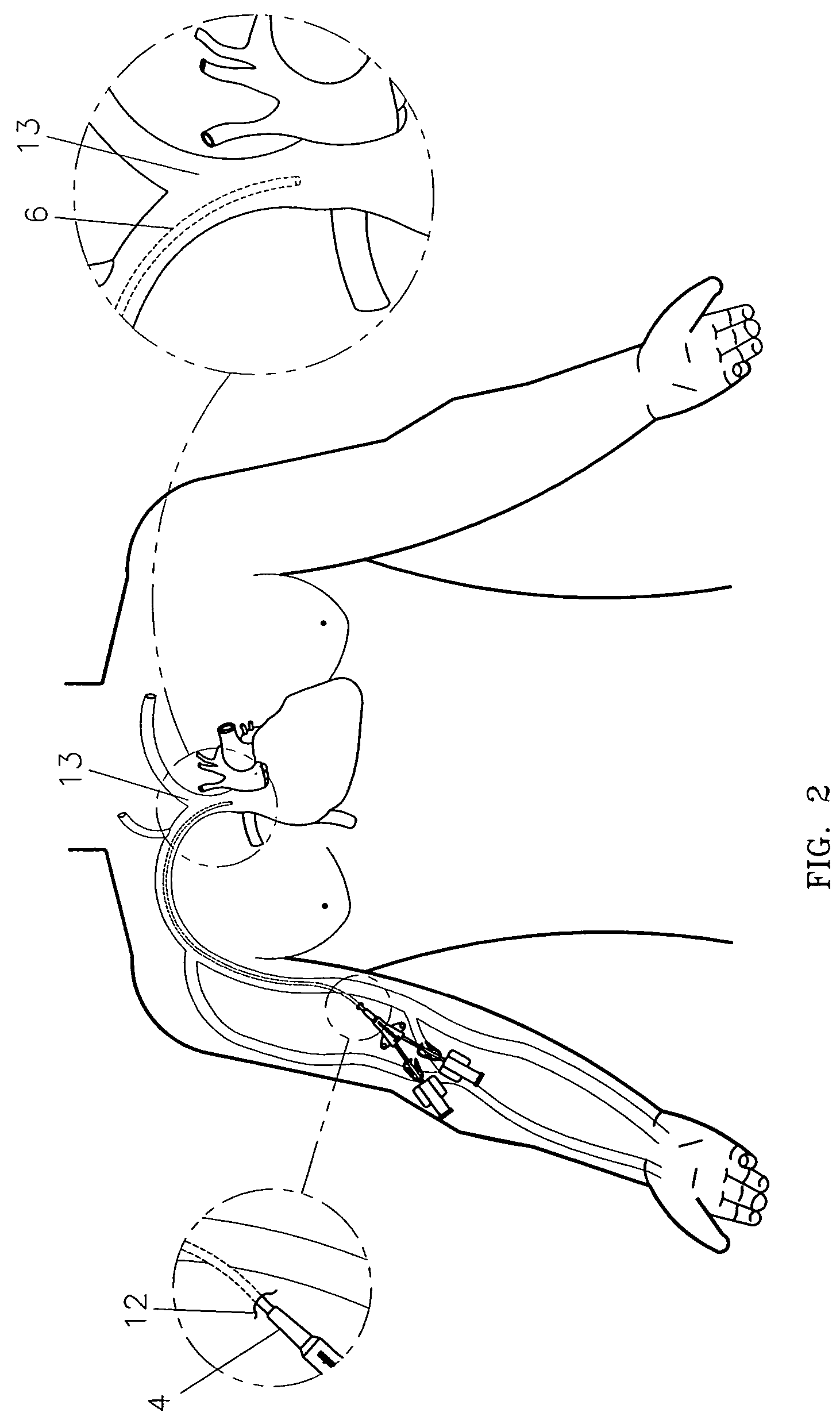Variable characteristic venous access catheter shaft
a catheter shaft and variable technology, applied in the field of medical devices, can solve the problems of increasing the difficulty of insertion, reducing the long-term durability of the catheter shaft, and uncomfortable catheters for patients
- Summary
- Abstract
- Description
- Claims
- Application Information
AI Technical Summary
Benefits of technology
Problems solved by technology
Method used
Image
Examples
Embodiment Construction
[0028]Referring to FIG. 1, a variable characteristic PICC line of the present invention is shown from a plan view. The catheter 1 is comprised of a hub section 2, a tube or shaft 3 with a substantially rigid proximal segment 4, a transition segment 5 and a substantially flexible distal segment 6. In the embodiment shown, a dual-lumen catheter is provided. In this embodiment, the hub 2 is further comprised of a bifurcated hub component 7 and two extension legs 8 corresponding to each shaft lumen, as is well known in the art. The extension legs 8 terminate at the proximal end with a connector such as a standard luer fitting 9 for connection to injection or aspiration devices. Leg clamps 10 coaxially arranged around the extension legs 8 may be used to clamp off or occlude the leg lumens, preventing the inflow or outflow of fluids through the catheter 1. The catheter may include measurement markers 11 to assist in placement within the vessel.
[0029]According to the present invention, a u...
PUM
 Login to View More
Login to View More Abstract
Description
Claims
Application Information
 Login to View More
Login to View More - R&D
- Intellectual Property
- Life Sciences
- Materials
- Tech Scout
- Unparalleled Data Quality
- Higher Quality Content
- 60% Fewer Hallucinations
Browse by: Latest US Patents, China's latest patents, Technical Efficacy Thesaurus, Application Domain, Technology Topic, Popular Technical Reports.
© 2025 PatSnap. All rights reserved.Legal|Privacy policy|Modern Slavery Act Transparency Statement|Sitemap|About US| Contact US: help@patsnap.com



